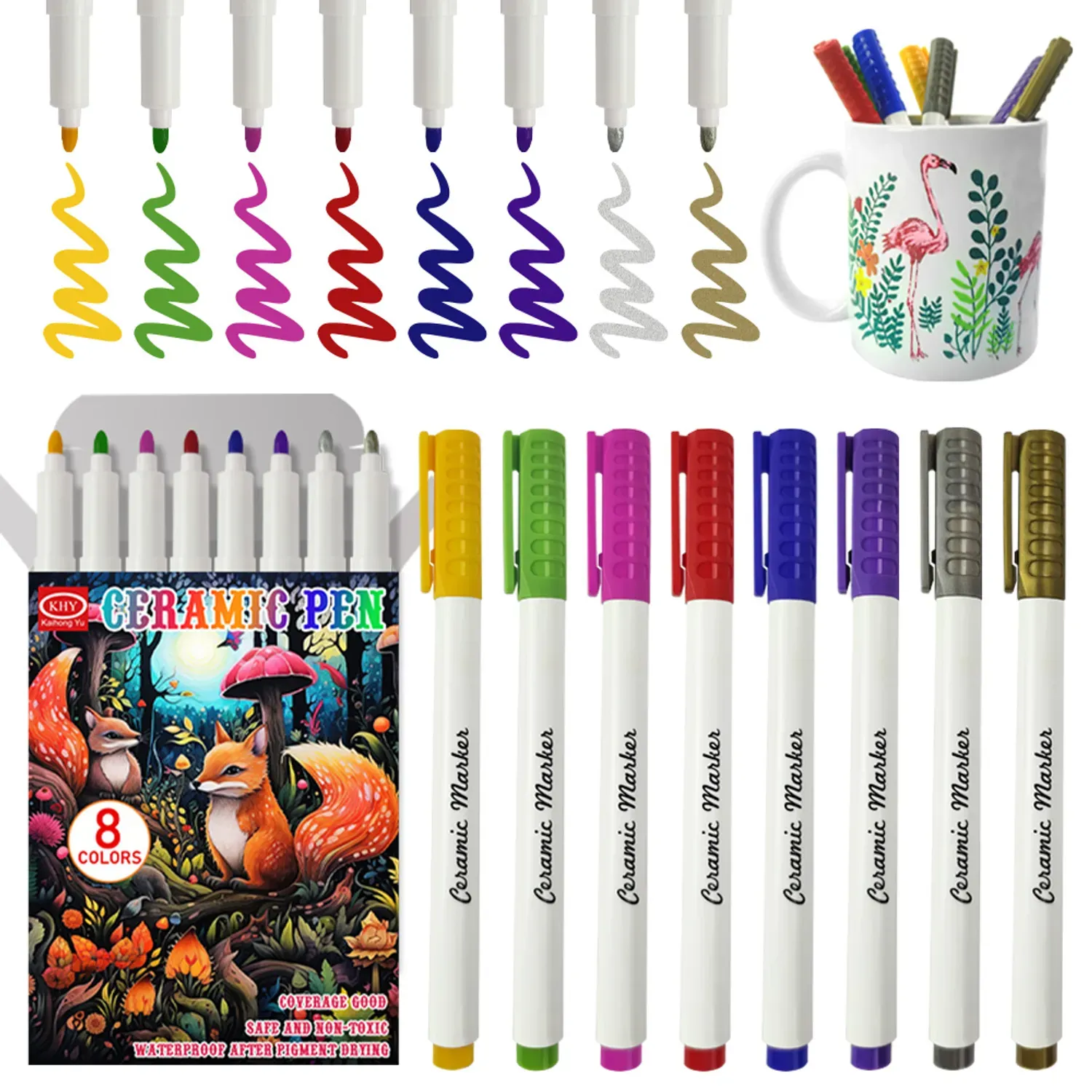betty@kaihong888.com

Get A Quote
How Long Does It Take Ceramic Paint to Dry?
Ceramic painting is a delightful and creative activity that allows you to transform plain ceramic pieces into colorful, personalized artworks. Whether you are an experienced artist or a beginner, a ceramic painting kit provides everything you need to start your artistic journey. A common question that arises when working on ceramic projects is, "How long does it take ceramic paint to dry?" In this comprehensive guide, we will explore the drying times of ceramic paint, factors that influence it, and tips to ensure the best results for your ceramic masterpieces.
Understanding Ceramic Paint
What is Ceramic Paint?
Ceramic paint is a specially formulated paint designed for use on ceramic surfaces. Unlike regular paints, ceramic paint adheres well to the non-porous surface of ceramics and withstands the high temperatures required for curing. This paint is commonly used for decorating ceramic mugs, plates, tiles, and other pottery items.
Types of Ceramic Paint
There are various types of ceramic paints available, each with its unique properties and drying times:
- Acrylic Ceramic Paint: Water-based and easy to clean, this paint dries quickly and is popular for home crafting projects.
- Underglaze Paint: Used before applying a clear glaze, underglaze paint is perfect for creating intricate designs that are later protected by the glaze.
- Overglaze Paint: Applied on top of a glazed surface, overglaze paint adds decorative elements and requires firing in a kiln to set.
Factors Affecting Ceramic Paint Drying Time
Type of Paint
The type of ceramic paint you use significantly affects the drying time. Acrylic ceramic paint usually dries faster than underglaze or overglaze paints. While acrylic paint might be touch-dry within an hour, underglaze and overglaze paints may take several hours to dry completely before they are ready for firing.
Layer Thickness
The thickness of the paint layer also influences the drying time. Thicker layers of paint take longer to dry compared to thin, even coats. When applying multiple layers, ensure that each layer is dry before applying the next to avoid smudging and uneven drying.
Environmental Conditions
Environmental factors such as temperature, humidity, and ventilation play a crucial role in the drying process of ceramic paint. Warmer temperatures and good air circulation can speed up drying times, while high humidity and poor ventilation can slow it down.
How Long Does It Take Ceramic Paint to Dry?
Acrylic Ceramic Paint Drying Time
Acrylic ceramic paint is known for its relatively fast drying time. Typically, it becomes touch-dry within 30 minutes to an hour. However, for the paint to cure completely and be safe for handling or additional layers, it is recommended to wait at least 24 hours.
Underglaze Paint Drying Time
Underglaze paint, used before applying a clear glaze, requires a longer drying period. It can take anywhere from 1 to 3 hours to become touch-dry. For optimal results, it is best to let the underglaze dry for at least 24 hours before applying the clear glaze and firing the piece in a kiln.
Overglaze Paint Drying Time
Overglaze paint, applied on top of a glazed surface, has the longest drying time. It can take several hours to become touch-dry, and it is crucial to wait at least 24 hours before firing the piece in a kiln to set the overglaze decorations.
Tips for Faster Drying and Better Results
Thin, Even Coats
Applying thin, even coats of paint ensures faster and more uniform drying. Thick layers of paint may trap moisture and prolong the drying process. Multiple thin coats also reduce the risk of cracking or peeling.
Proper Ventilation
Ensure your workspace is well-ventilated to facilitate faster drying. Good air circulation helps evaporate moisture from the paint, speeding up the drying process.
Avoid High Humidity
High humidity levels can significantly slow down the drying time of ceramic paint. If possible, paint your ceramics in a controlled environment with low humidity. Using a dehumidifier can also help reduce moisture in the air.
Use a Fan or Hairdryer
To accelerate the drying process, you can use a fan or hairdryer on a low, cool setting. Be careful not to blow too close to the painted surface, as this can cause the paint to crack or form bubbles.
Patience is Key
While it may be tempting to rush the drying process, patience is essential for achieving the best results. Allowing each layer to dry thoroughly before applying the next ensures a smooth, professional finish.
Conclusion
Understanding the drying times for ceramic paint is crucial for achieving high-quality results in your ceramic painting projects. Different types of ceramic paint—acrylic, underglaze, and overglaze—have varying drying times, influenced by factors such as layer thickness and environmental conditions. Patience and proper technique, including applying thin coats and ensuring good ventilation, are key to a smooth and professional finish.
For all your ceramic painting needs, consider KHY. As a leading provider of DIY paint wholesale and bulk professional paint products, KHY offers a wide range of high-quality ceramic paints and painting kits. Whether you are a hobbyist or a professional, KHY's products are designed to help you achieve the best results in your creative projects. Visit KHY DIY to explore their extensive selection of ceramic paints and elevate your ceramic painting experience today.

